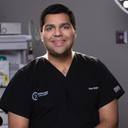Is a Fractional non-ablative laser different than a CO2 ablative laser? Is one of these methods the best for treating acne scars? How long does the redness last?
Answers (18)
From board-certified doctors and trusted medical professionals
Dr. Hooman Khorasani, MD

Dr. Hooman Khorasani, MD
Dermatologic Surgeon, Board Certified in Dermatology
Answer
Dr. Raffy Karamanoukian, MD, FACS

Dr. Raffy Karamanoukian, MD, FACS
Board Certified Plastic Surgeon
Answer
Dr. Matthew Richardson, MD

Dr. Matthew Richardson, MD
Board Certified Facial Plastic Surgeon
Answer
Dr. R. Brannon Claytor, MD, FACS

Dr. R. Brannon Claytor, MD, FACS
Board Certified Plastic Surgeon
Answer
Dr. Mike Majmundar, MD

Dr. Mike Majmundar, MD
Board Certified Facial Plastic Surgeon
Answer
Dr. Johnny Mao, MD, FACS

Dr. Johnny Mao, MD, FACS
Board Certified Facial Plastic Surgeon
Answer
Dr. Brian K. Machida, MD, FACS

Dr. Brian K. Machida, MD, FACS
Board Certified Facial Plastic Surgeon
Answer
Dr. Hannah Vargas, MD

Dr. Hannah Vargas, MD
Board Certified Facial Plastic Surgeon
Answer
Dr. Julian De Silva, MD

Dr. Julian De Silva, MD
Oculoplastic Surgeon, Specialist Registered in Ophthalmology
Answer
Dr. M. David Cole, MD, FAAD
Dr. M. David Cole, MD, FAAD
Board Certified Dermatologist
Answer
More Fractional Laser Questions
See all Fractional Laser Q&AWE SEND PRETTY
EMAILS
What’s trending? Who’s turning heads? Which TikTok myths need busting? We’ve got you. No fluff, no gatekeeping—just real talk. Get our free, unfiltered newsletter.